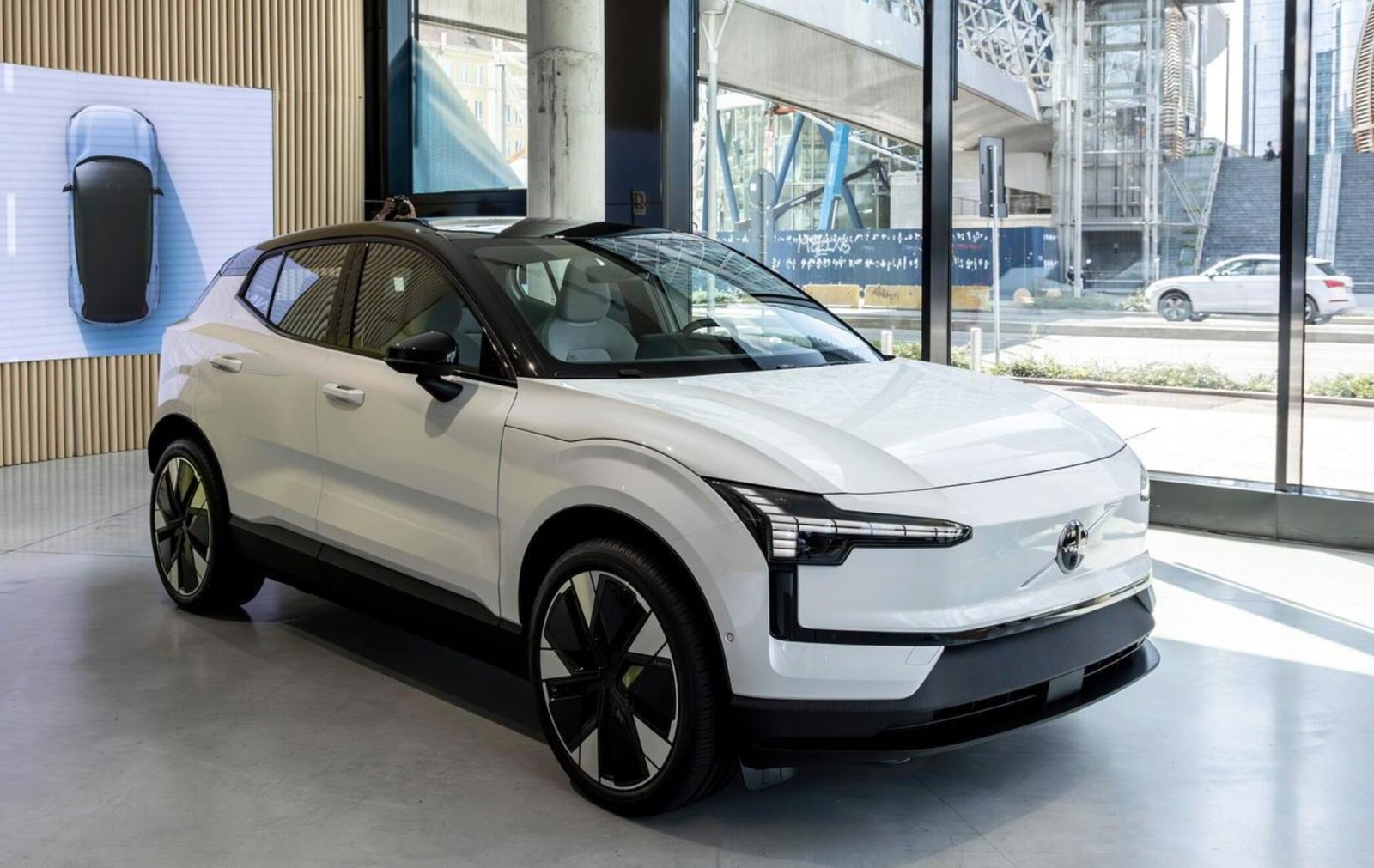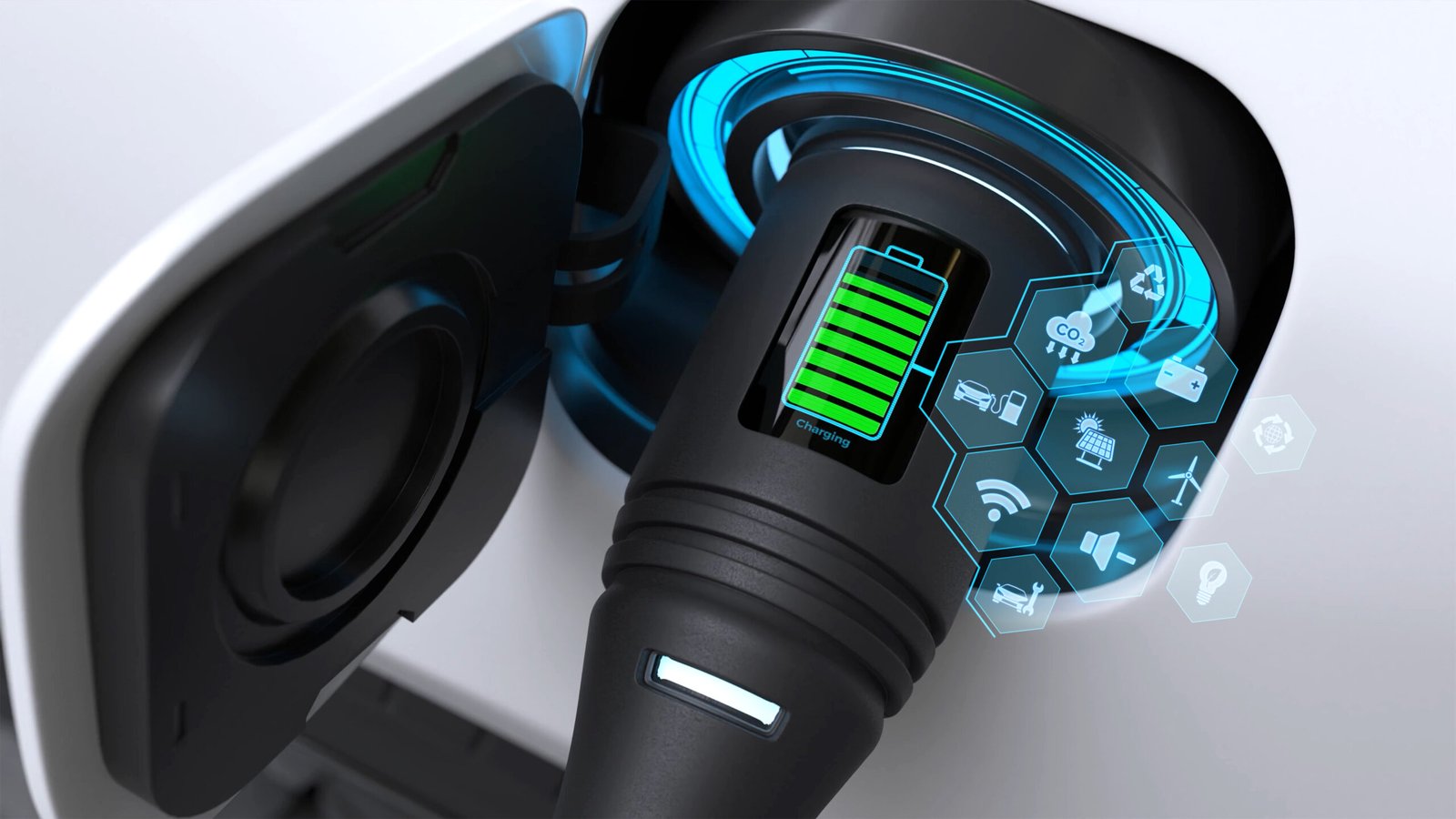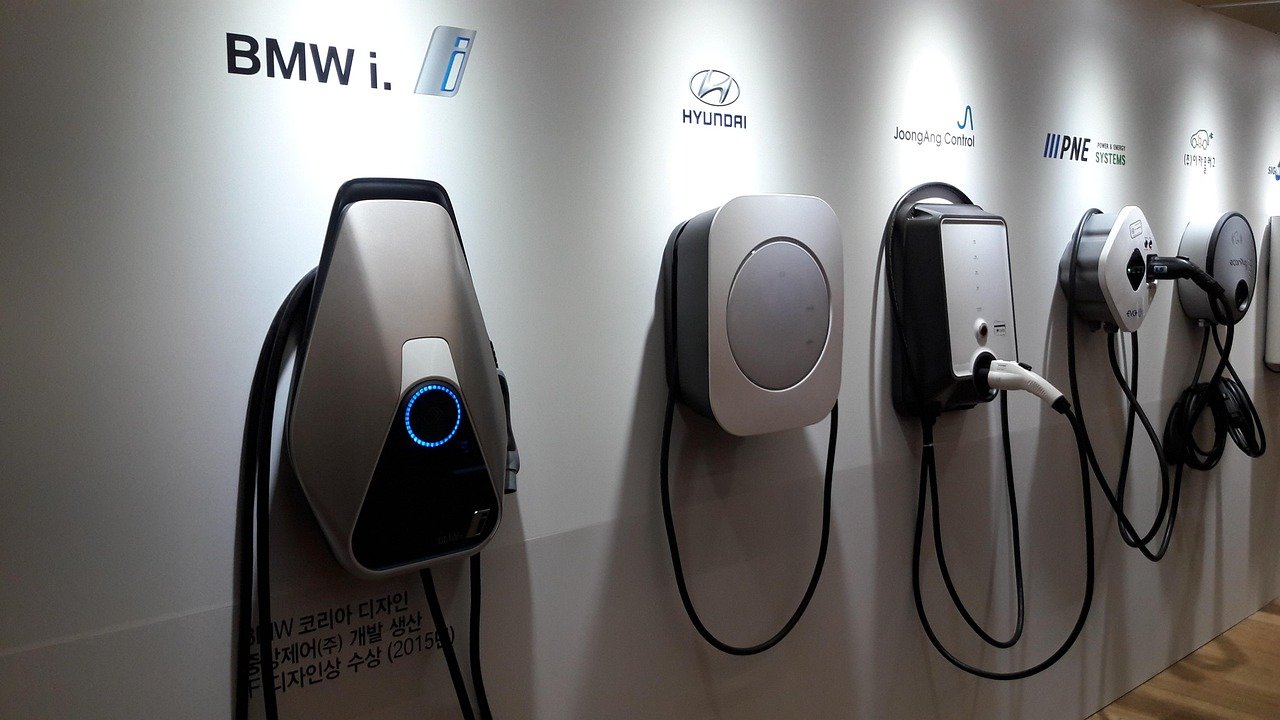Electric Car Air Conditioning Systems | Efficient EV Climate Control 2025

As you drive your electric vehicle, a well-functioning air conditioning system is crucial for a comfortable driving experience. The HVAC system in your vehicle plays a significant role in maintaining a pleasant cabin temperature, regardless of the outside weather conditions.

When it comes to maximizing comfort, the right AC system can make all the difference. Factors such as energy efficiency, cooling performance, and compatibility with your vehicle’s battery management system are essential considerations.
By choosing the appropriate electric car air conditioning system, you can enjoy a more comfortable and enjoyable driving experience.
Key Takeaways
- Importance of a well-functioning AC system in electric vehicles
- Role of HVAC system in maintaining cabin comfort
- Factors to consider for optimal AC system performance
- Benefits of an energy-efficient AC system
- Compatibility considerations for electric vehicle HVAC systems
How Electric Car Climate Control Works
Electric vehicles rely on sophisticated climate control systems to maintain a comfortable cabin temperature while optimizing battery performance. This is achieved through advanced thermal management systems.
The Fundamentals of EV Thermal Management
Electric vehicle (EV) thermal management is crucial for maintaining optimal operating temperatures. It involves managing the temperature of the battery, electric motor, and cabin. Effective thermal management ensures the longevity and efficiency of the vehicle’s components.
Battery Temperature Regulation Needs
Regulating battery temperature is vital for EVs. Extreme temperatures can affect battery performance, lifespan, and overall vehicle efficiency. Most EVs use cooling systems to maintain an optimal battery temperature.

| Component | Function | Importance |
|---|---|---|
| Battery Cooling System | Maintains optimal battery temperature | High |
| Cabin Climate Control | Provides comfort to occupants | High |
| Thermal Management Unit | Manages temperature across components | Critical |
Understanding these components and their functions is key to appreciating the complexity of EV climate control. By efficiently managing temperature, EVs can optimize performance and range.
Electric Car Air Conditioning System Components
Understanding the components of electric car air conditioning systems is crucial for appreciating the technology that keeps your vehicle comfortable. These systems are designed with sustainable vehicle climate control in mind, ensuring that your electric vehicle remains at a comfortable temperature while minimizing energy consumption.
The air conditioning system in your electric car is made up of several key components, including heat pumps, compressors, and thermal management control units, all of which work together to provide electric auto air con features that enhance your driving experience.
Heat Pumps vs. Resistive Heating Elements
Heat pumps and resistive heating elements are two different approaches used in electric vehicles to manage temperature. Heat pumps are highly efficient, transferring heat from one location to another, whereas resistive heating elements convert electrical energy into heat. Heat pumps are generally more energy-efficient, especially in mild climates, making them a popular choice for many electric vehicles.
Compressors and Energy-Efficient Refrigerants
The compressor is a critical component of the air conditioning system, responsible for compressing the refrigerant that cools the air. Modern electric vehicles often use energy-efficient refrigerants that have a lower environmental impact. These refrigerants, combined with advanced compressor technology, help to minimize the energy consumption of the air conditioning system, thus preserving the vehicle’s range.
Some key features of compressors and refrigerants include:
- High-efficiency compression technology
- Environmentally friendly refrigerants with low GWP (Global Warming Potential)
- Advanced system designs that minimize energy loss
Thermal Management Control Units
Thermal management control units play a vital role in managing the temperature of various vehicle components, including the battery, electric motor, and cabin. These units ensure that each component operates within its optimal temperature range, enhancing overall efficiency and longevity. By integrating sustainable vehicle climate control strategies, these units help to reduce energy consumption and improve the vehicle’s overall performance.
| Component | Function | Benefits |
|---|---|---|
| Heat Pumps | Transfer heat from one location to another | Highly efficient, especially in mild climates |
| Compressors | Compress refrigerant to cool air | Essential for air conditioning, with modern designs focusing on efficiency |
| Thermal Management Control Units | Manage temperature of vehicle components | Enhance efficiency, performance, and longevity of components |

How EV Climate Control Affects Your Driving Range
Electric vehicle owners often wonder how their car’s climate control system impacts its overall range. The climate control system, which includes the air conditioning (AC) and heating systems, is one of the most significant auxiliary loads in an electric vehicle (EV), directly affecting its driving range.
The efficiency of the EV’s climate control system is crucial, especially in extreme temperatures. When you use the AC or heating, it consumes additional energy from the battery, reducing the overall range of your vehicle.
Understanding the Energy Consumption of AC Systems
The energy consumption of AC systems in EVs is a significant factor in determining the vehicle’s range. Efficient ev air conditioning efficiency is key to minimizing the impact on range. Modern EVs employ various technologies to optimize AC performance while reducing energy consumption.
For instance, some EVs use heat pumps instead of traditional resistive heating elements for heating. Heat pumps are more energy-efficient as they transfer heat rather than generate it, thus consuming less energy.
Real-World Range Impact in Different Climates
The real-world impact of climate control on an EV’s range varies significantly with climate. In hot climates, the use of AC can reduce the range by up to 20%, while in cold climates, heating can have a similar impact.
| Climate | Average Temperature | Range Impact |
|---|---|---|
| Hot | Above 30°C (86°F) | Up to 20% reduction |
| Mild | 15°C to 30°C (59°F to 86°F) | Minimal impact |
| Cold | Below -10°C (14°F) | Up to 20% reduction |
Understanding these dynamics can help you optimize your EV’s climate control settings to achieve a balance between comfort and range, especially in extreme climates.
Smart Features of Modern Electric Vehicle HVAC Systems
Electric vehicle owners can now enjoy a more comfortable driving experience thanks to the smart features integrated into modern EV HVAC systems. These advanced systems are designed not only to provide a pleasant cabin environment but also to optimize energy consumption, thereby potentially extending the vehicle’s driving range.
One of the standout features of contemporary electric vehicle HVAC systems is their ability to be controlled remotely, particularly while the vehicle is charging. This capability allows owners to pre-condition their vehicle’s cabin temperature, ensuring it’s comfortable by the time they get in.
Remote Pre-conditioning While Charging
Remote pre-conditioning is a feature that enables you to adjust your vehicle’s temperature while it’s still connected to the charger. This means you can start your journey with a comfortable cabin temperature without using valuable battery energy during your trip. It’s a convenient feature that enhances your overall driving experience.
Zoned Climate Control for Personalized Comfort
Zoned climate control is another innovative feature found in many modern EVs. This system allows for different temperatures to be set in different areas of the vehicle, catering to the individual preferences of both the driver and passengers. By providing personalized comfort, zoned climate control can enhance the overall driving experience.
App Integration and Scheduled Climate Settings
Many electric vehicles now come with app integration that allows owners to control their HVAC system remotely through their smartphones. Additionally, some models offer scheduled climate settings, enabling you to pre-set when you want your vehicle to be at a certain temperature. This not only adds convenience but can also help in optimizing energy use.
As highlighted by a leading EV manufacturer, “The integration of smart technologies into HVAC systems represents a significant step forward in electric vehicle comfort and efficiency.” Such advancements underscore the evolving nature of EV technology and its potential to enhance the driving experience.
Optimizing Your EV’s Climate Control for Maximum Efficiency
A well-managed climate control system is essential for electric vehicle owners looking to boost efficiency. Your electric car’s air conditioning system plays a significant role in its overall performance and range. By optimizing its settings and usage, you can enjoy a comfortable driving experience while minimizing energy consumption.
Temperature Setting Best Practices
One of the simplest ways to optimize your EV’s climate control is by adjusting your temperature settings wisely. In hot weather, setting the temperature a few degrees higher than usual can significantly reduce the load on your electric car air conditioning system. Conversely, in cold weather, lowering the temperature setting can help minimize energy consumption. It’s also beneficial to use the vehicle’s climate control pre-conditioning feature while it’s still charging, so you’re not using battery power to cool or heat the cabin.
Using Seat Heaters and Steering Wheel Warmers Strategically
Using seat heaters and steering wheel warmers can be an efficient way to stay warm without cranking up the climate control system. These features consume less energy than heating the entire cabin, making them a cost-effective option for maintaining comfort during colder months. Try using them in conjunction with lowering the overall cabin temperature to achieve a balance between comfort and sustainable vehicle climate control.
Ventilation Strategies to Reduce Energy Use
Effective ventilation can also play a crucial role in reducing the energy consumed by your EV’s climate control system. Using the vehicle’s fresh air intake or vent modes can help circulate air without relying heavily on the air conditioning or heating. Additionally, parking your vehicle in a shaded area or using a sunshade can reduce the interior temperature, thereby reducing the need for aggressive cooling when you start driving.
By implementing these strategies, you can significantly enhance the efficiency of your EV’s climate control system, contributing to a more sustainable vehicle climate control experience. This not only helps in maximizing your vehicle’s range but also ensures a comfortable driving experience throughout the year.
Eco-Friendly Car AC Technology Advancements
Electric vehicles are paving the way for innovative, eco-friendly AC systems that not only reduce environmental impact but also enhance driving comfort. As the automotive industry continues to evolve, the focus on sustainable cooling solutions has become increasingly important.
Sustainable Refrigerants and Their Environmental Impact
The shift towards sustainable refrigerants is a critical step in reducing the environmental footprint of car AC systems. Traditional refrigerants have been known to contribute to global warming and ozone depletion. In contrast, modern eco-friendly alternatives such as R-1234yf offer a significantly lower global warming potential.
- Eco-friendly refrigerants like R-1234yf reduce greenhouse gas emissions.
- These refrigerants are designed to be more energy-efficient, enhancing overall vehicle performance.
- The adoption of sustainable refrigerants is a key factor in minimizing the environmental impact of electric vehicles.
Energy Recovery and Heat Scavenging Systems
Another significant advancement in eco-friendly car AC technology is the development of energy recovery and heat scavenging systems. These systems are designed to capture and reuse energy that would otherwise be wasted, thereby improving the overall efficiency of the vehicle’s climate control system.
For instance, some electric vehicles employ heat pumps that can extract heat from the ambient air, even at low temperatures, to warm the cabin. This approach not only reduces energy consumption but also enhances the vehicle’s range and performance.
“The integration of energy recovery systems in electric vehicles represents a significant step forward in eco-friendly car AC technology, offering both environmental and performance benefits.”
By incorporating these advanced technologies, electric vehicle manufacturers can provide a more sustainable and comfortable driving experience. As the industry continues to innovate, we can expect to see even more efficient and environmentally friendly car AC systems in the future.
Troubleshooting Common Electric Car Cooling System Issues
Troubleshooting your electric car’s cooling system is crucial for maintaining optimal performance and comfort. Issues with the cooling system can lead to reduced efficiency, increased energy consumption, and discomfort during extreme weather conditions.
Diagnosing Reduced Cooling or Heating Performance
If your electric car’s cooling or heating performance is reduced, it could be due to several factors. Check the coolant level and condition, as low levels or contaminated coolant can significantly impact system performance. Additionally, inspect the system for any signs of leaks or damage.
Common issues to look out for include:
- Faulty temperature sensors
- Clogged air filters
- Refrigerant leaks
Maintenance Tips for Optimal Operation
Regular maintenance is key to ensuring your electric car’s cooling system operates efficiently. Check and replace the cabin air filter as recommended by the manufacturer, and ensure that the cooling system is serviced according to the schedule outlined in your owner’s manual.
As Consumer Reports notes, “Regular maintenance can help prevent issues with your electric vehicle’s cooling system and ensure it runs efficiently.”
When to Consult a Specialized EV Technician
If you’re experiencing persistent issues with your electric car’s cooling system, it’s time to consult a specialized EV technician. They have the training and equipment to diagnose complex problems and perform necessary repairs.
“A specialized technician can help you identify and fix issues with your electric vehicle’s cooling system, ensuring it operates efficiently and effectively.”
By following these troubleshooting tips and maintaining your electric car’s cooling system, you can enjoy optimal performance and comfort throughout the year.
Conclusion: Enjoying Year-Round Comfort in Your Electric Vehicle
As you’ve learned, a well-functioning electric vehicle hvac system is crucial for a comfortable driving experience. By understanding how climate control works, its components, and its impact on your driving range, you can optimize your EV’s performance.
With features like remote pre-conditioning, zoned climate control, and app integration, modern EVs offer sustainable vehicle climate control that not only enhances comfort but also reduces energy consumption.
By implementing best practices such as temperature setting adjustments, strategic use of seat heaters and steering wheel warmers, and efficient ventilation strategies, you can enjoy year-round comfort while minimizing the impact on your EV’s range.
As eco-friendly car AC technology continues to advance, you can expect even more efficient and sustainable solutions for your electric vehicle. By staying informed and maintaining your EV’s climate control system, you’ll be able to enjoy a comfortable and environmentally friendly driving experience.
FAQ
How does an electric car air conditioning system differ from a traditional gasoline-powered car’s AC system?
An electric car’s air conditioning system is designed to be more energy-efficient, as it is powered directly by the vehicle’s electric battery, reducing the load on the electric motor. This results in a more optimized performance and less energy consumption.
What is the role of heat pumps in electric vehicle HVAC systems?
Heat pumps play a crucial role in electric vehicle HVAC systems by providing both heating and cooling. They work by transferring heat from one location to another, making them more efficient than traditional resistive heating elements, especially in colder climates.
How do eco-friendly car AC technologies impact the environment?
Eco-friendly car AC technologies, such as sustainable refrigerants and energy recovery systems, significantly reduce the environmental impact of electric vehicles. These advancements minimize greenhouse gas emissions and help to decrease the overall carbon footprint of EVs.
Can I improve the efficiency of my electric car’s climate control system?
Yes, you can optimize your electric car’s climate control system by adopting best practices such as pre-conditioning your vehicle while it’s still charging, using zoned climate control, and strategically utilizing seat heaters and steering wheel warmers.
How does the electric car cooling system affect the vehicle’s driving range?
The electric car cooling system can impact the driving range, as it consumes energy from the battery. However, modern EVs are designed to minimize this impact, and features like regenerative braking and advanced thermal management help to optimize the range.
What are the benefits of using energy-efficient refrigerants in electric vehicle air conditioning systems?
Energy-efficient refrigerants have a lower global warming potential and reduce the overall environmental impact of the air conditioning system. They also contribute to improved system performance and efficiency, which can help to increase the driving range of your EV.
How can I troubleshoot common issues with my electric car’s cooling system?
To troubleshoot common issues, start by checking for reduced cooling or heating performance, and ensure that your vehicle’s software is up-to-date. Regular maintenance, such as checking refrigerant levels and inspecting the system for leaks, can also help to identify and resolve problems.
Are there any maintenance tips for optimizing my EV’s climate control system?
Yes, regular maintenance is essential. This includes checking and replacing cabin air filters, ensuring proper refrigerant levels, and having your vehicle’s climate control system inspected by a qualified technician as needed.










